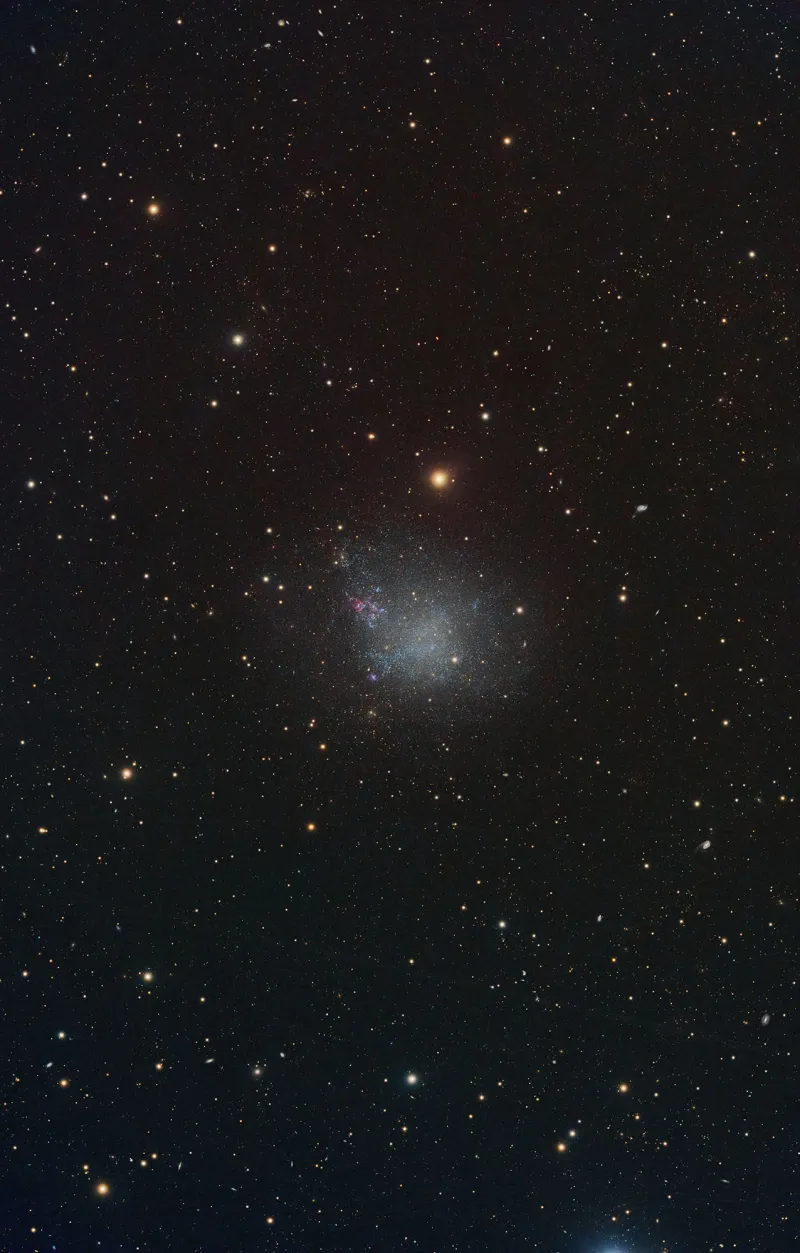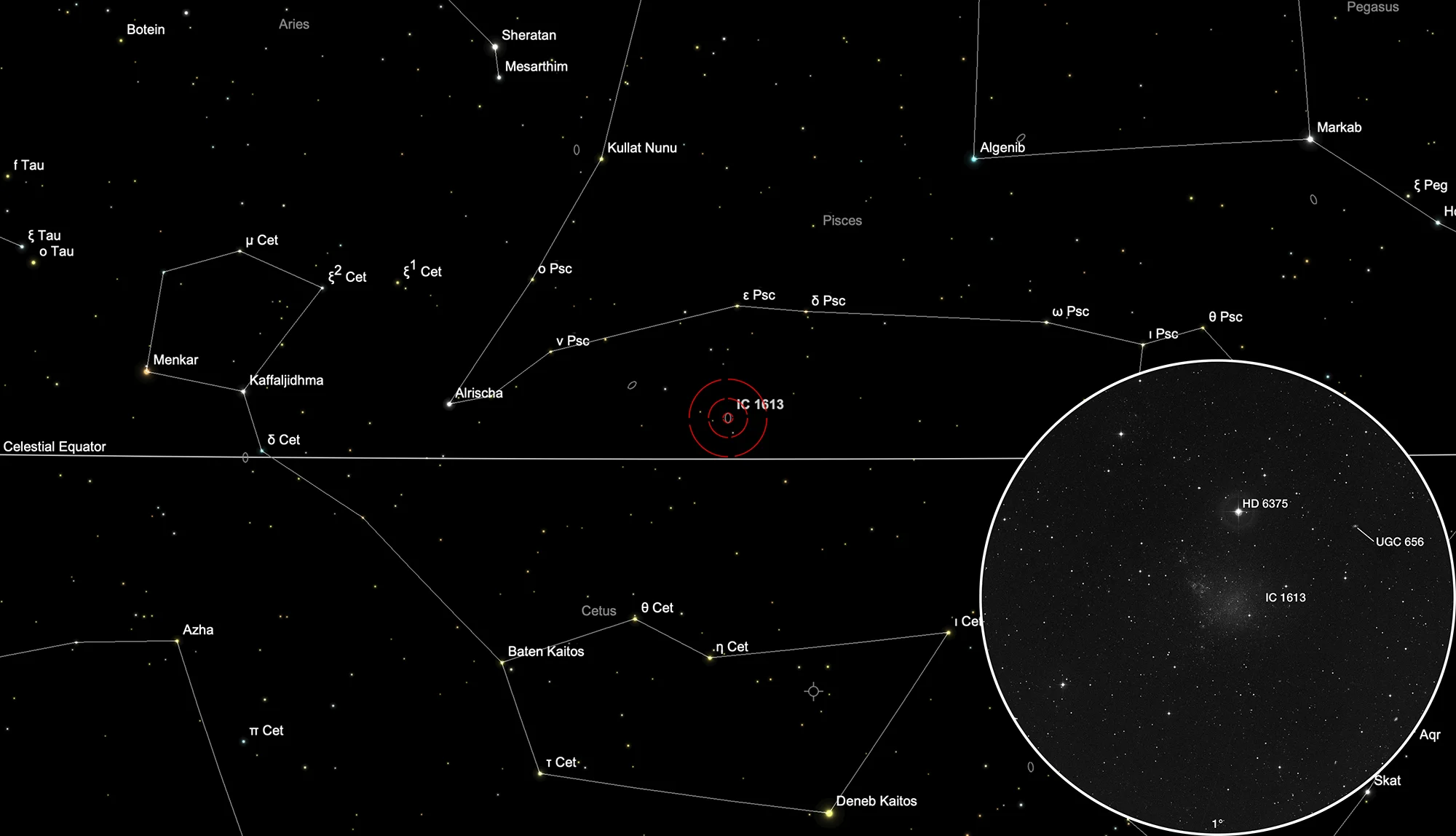Dwarf Galaxy IC 1613

History
In September 1906 German astronomer Max Wolf discovered the dwarf galaxy IC 1613 on a photo plate taken with the with the 16" Bruce reflector at Koenigstuhl Observatory, Heidelberg. William Baade first showed it was extragalactic in 1935 and a year later Hubble included it as a Local Group member. [277, 364]
Physical Properties
IC 1613 is an irregular dwarf galaxy and a member of our Local Group of galaxies, which also includes our Milky Way and the Magellanic Clouds. The distance is estimated to 2.4 million light-years. The galaxy contains some 100 million stars, among them several examples of Cepheid variables, standard cosmic distance calibrators. The majority of its stars were formed about 7 billion (109) years ago and it seems that currently there is no more star formation taking place, in contrary to other very active dwarf galaxies like the Large and Small Magellanic Clouds.
Through IC 1613 a background galaxy cluster is visible. In their centre is a pair of giant elliptical galaxies, several hundred times further a away than IC 1613. [163] The 7.2 mag foreground star HD 6375 is of spectral type K4III and in a distance of 130 pc. [145]
| Designation | IC 1613 |
| Type | Gx (IBm) |
| Right Ascension (J2000.0) | 01h 04m 47.5s |
| Declination (J2000.0) | +02° 07' 07" |
| Diameter | 16.6 × 14.9 arcmin |
| Photographic (blue) magnitude | 9.9 mag |
| Visual magnitude | 9.2 mag |
| Surface brightness | 15.0 mag·arcmin-2 |
| Position Angle | 50° |
| Redshift (z) | -0.000781 |
| Metric Distance | 0.740 Mpc |
| Dreyer Description | F, eeL |
| Identification, Remarks | UGC 668; MCG 0-3-70; DDO 8; CGCG 384-68; IRAS 01025+0153 |
Finder Chart
The dwarf galaxy IC 1613 is located in the constellation Cetus. The 7.2 mag star HD 6375 helps to find the faint galaxy, which is right south of it. The best observation time is June to March.
